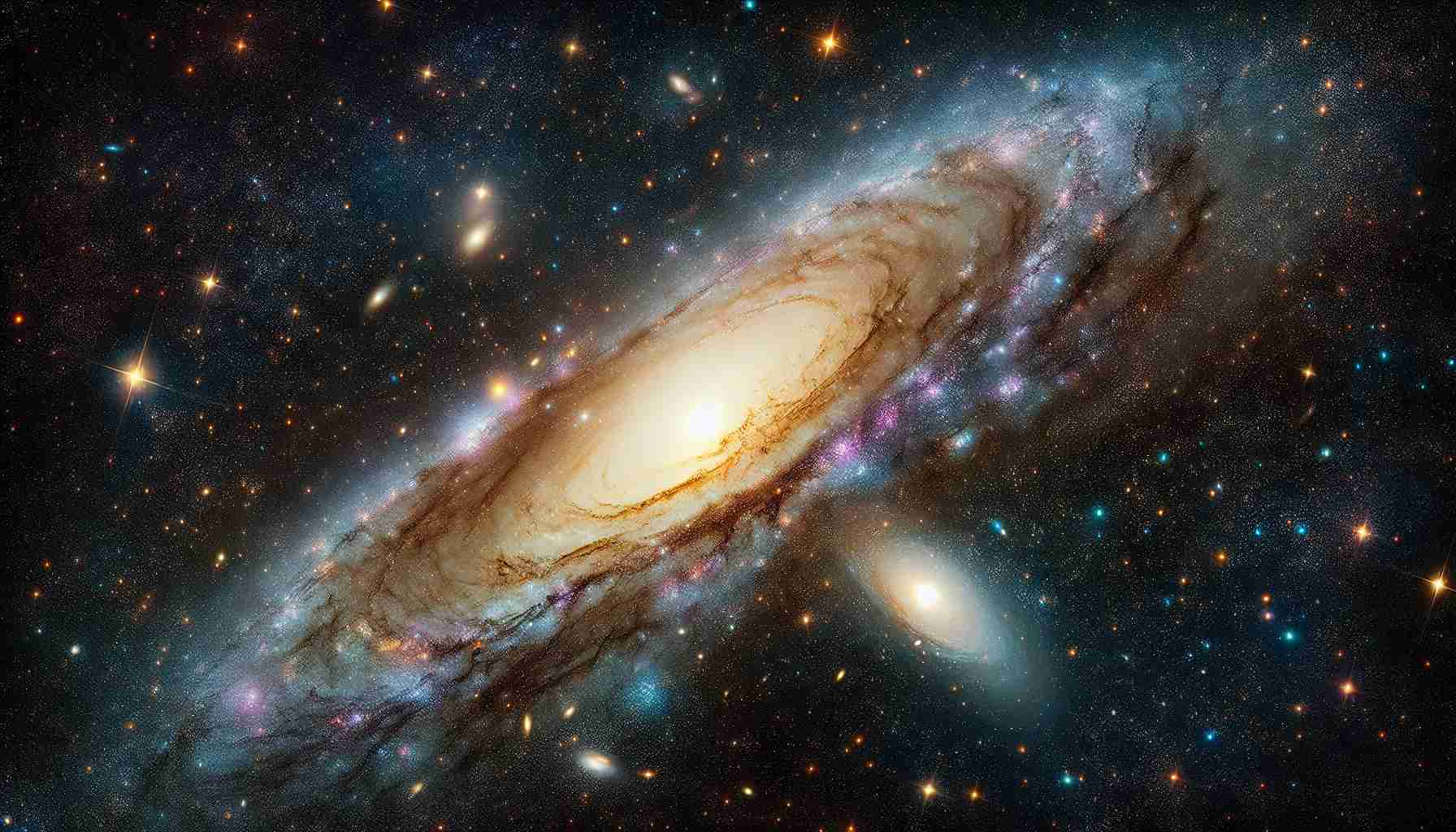Unveiling Andromeda Through Hubble’s Lens
The Hubble Space Telescope has achieved a remarkable milestone by assembling a breathtaking mosaic of our galaxy’s nearest neighbor, the Andromeda Galaxy. This intricate image was unveiled by the European Space Agency (ESA) and represents over ten years of dedicated observation.
The stunning mosaic comprises approximately 600 separate views, presenting Andromeda from a striking 77-degree tilt, which is quite different from typical observations. Achieving this monumental task necessitated Hubble to orbit Earth more than 1,000 times while implementing two distinct observational strategies to capture both halves of the galaxy.
This latest image boasts a staggering 2.5 billion pixels, marking a new benchmark for detail in Andromeda imagery. Researchers have succeeded in pinpointing over 200 million stars within this expansive view, revealing them like “grains of sand on a beach” as one delves deeper into the image. However, this may only represent a fraction of reality, as estimates suggest Andromeda could harbor up to 1 trillion stars, significantly eclipsing the Milky Way.
The enhanced detail in the mosaic provides astronomers with opportunities to investigate Andromeda’s historical interactions, including possible past collisions with satellite galaxies. Insights gained from these comparisons may also hint at the Milky Way’s eventual future, potentially involving a merger with Andromeda in the distant cosmic timeline.
Exploring the Cosmic Narrative: Andromeda’s Image and Its Broader Impact
The unveiling of Hubble’s intricate image of the Andromeda Galaxy not only dazzles the eye but also serves as a powerful lens through which we can examine the broader implications of such astronomical pursuits. As our nearest galactic neighbor, understanding Andromeda can profoundly shape our comprehension of cosmic evolution, and potentially inform global scientific collaboration initiatives.
Societal curiosity about the cosmos drives cultural shifts, enriching public discourse on science and technology. Improved imagery like this fosters enthusiasm in STEM education and encourages the next generation of scientists and engineers. Furthermore, these advancements transcend geographical boundaries, prompting international partnerships grounded in shared knowledge and research, which enhances global cooperation.
On the environmental frontier, space missions often provide technological breakthroughs with applications on Earth, from enhancing satellite communications to improving climate monitoring systems. The insights gained from Andromeda’s complex structure could illuminate the dynamics of our own galaxy, leading to better predictive models of cosmic events that could someday impact Earth.
Future trends in astronomy indicate a continued push towards utilizing advanced data analytics and machine learning to interpret large volumes of cosmic data. The events captured in Andromeda’s history are not just relics of the past but are essential keys to understanding the fate of our galaxy, making this endeavor a significant milestone with long-lasting ramifications for both science and society alike.
Discover the Secrets of Andromeda: Hubble’s Groundbreaking Insights!
Unveiling Andromeda Through Hubble’s Lens
The Hubble Space Telescope continues to redefine our understanding of the universe. Its most recent achievement, a stunning mosaic image of the Andromeda Galaxy, showcases a level of detail that has never been seen before. This impressive endeavor, undertaken by the European Space Agency (ESA), represents a decade-long commitment to unraveling the mysteries of our galactic neighbor.
Key Features of the Andromeda Mosaic
1. Unprecedented Detail: The Andromeda mosaic consists of about 600 individual images, all captured by Hubble in a unique 77-degree tilt. This perspective allows astronomers to view the galaxy in a way that deviates from conventional methods, enhancing our understanding of its structure and composition.
2. Staggering Pixel Count: The newly released mosaic image exceeds an astonishing 2.5 billion pixels. This level of detail empowers researchers to identify over 200 million stars in Andromeda, revealing a vast cosmic landscape. However, this is likely just the tip of the iceberg, as Andromeda is estimated to contain up to 1 trillion stars, dwarfing the 100 to 400 billion stars in our own Milky Way galaxy.
3. Historical Insights: By analyzing the detailed features presented in the mosaic, astronomers can explore Andromeda’s history and its interactions with surrounding satellite galaxies. These studies may illuminate the past collisions Andromeda has experienced, offering clues about its evolution over time.
Looking Ahead: Predictions and Future Studies
The insights gained from this mosaic extend beyond Andromeda itself. Researchers are increasingly interested in the implications for our own galaxy. Current models suggest that the Milky Way and Andromeda are on a collision course, expected to merge in about 4.5 billion years. Understanding Andromeda’s structure and past can provide valuable data for predicting the future of our galaxy during this cosmic event.
Sustainability and Technological Innovations
Hubble’s long-term observations underscore the importance of sustained investment in space technologies. The continuous upgrade and maintenance of telescopes allow us to gather more data over time, contributing to our ever-growing body of astronomical knowledge. This commitment to innovation is critical for ongoing discoveries and for planning future missions to other celestial bodies.
Use Cases of Hubble’s Findings
The detailed observations of Andromeda help astronomers:
– Investigate star formation rates and galactic evolution.
– Analyze the composition of different star types and their distributions.
– Study dark matter’s influence on galaxies.
Conclusion: A Step Forward in Astronomy
The recent mosaic image of Andromeda not only enriches our understanding of this majestic galaxy but also enhances our knowledge about galactic dynamics and the future of our own Milky Way. As technology improves and more data becomes available, the mysteries of our universe will continue to unfold, revealing the intricate tapestry of cosmic evolution.
For more groundbreaking astronomical updates and information, visit NASA.














